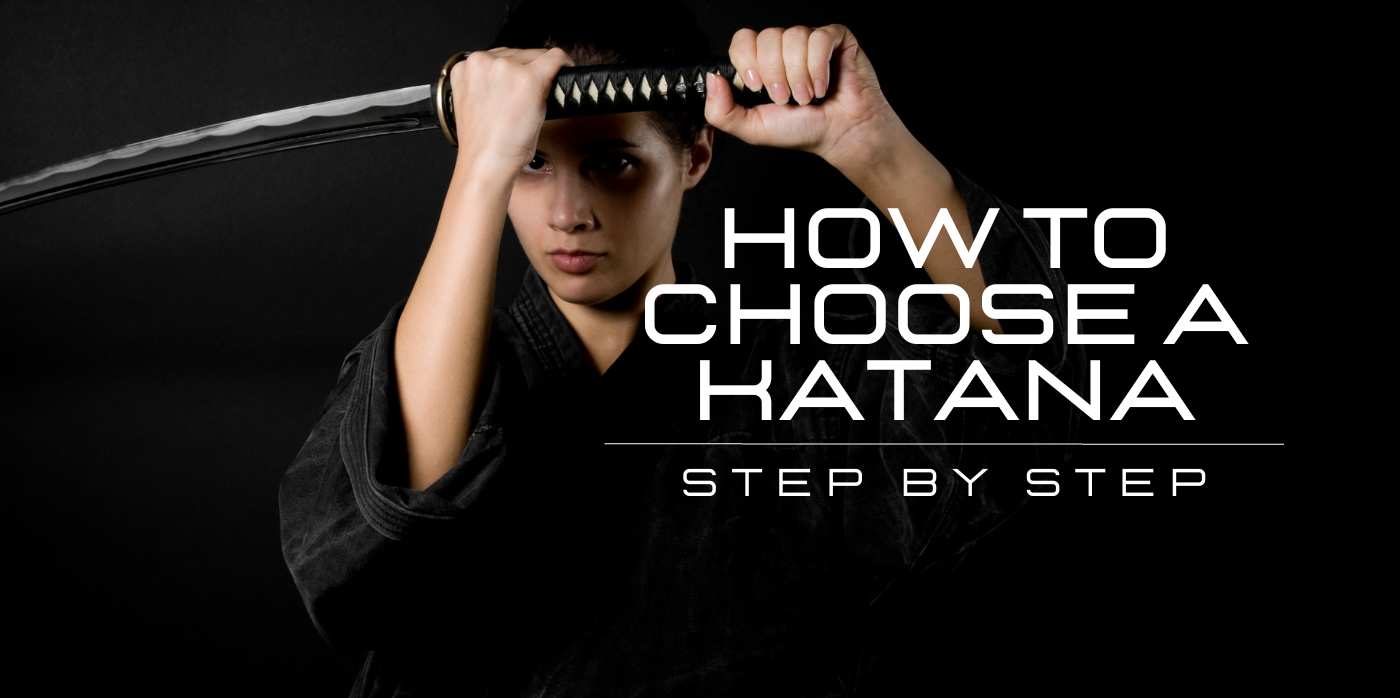The Katana, the traditional Samurai sword, represents Japan's ancient martial culture. Whether you are interested in martial arts, or you are a Samurai swords collector, selecting a Katana may be an exciting but difficult task. So, how to choose the perfect katana for you? Individuals who are inexperienced with the approach may find it unsettling. This article will lead you through the process, focusing on factors like as the purpose of the Katana, materials used, and workmanship to help you make an informed decision.
1. Considerations for Choosing a Katana
1.1 Purpose
When choosing a katana, understanding its intended purpose is crucial. Katanas can serve a variety of purposes, ranging from practical martial arts training to aesthetic home decor.
For training purposes, the type of katana you select should match your practice's intensity and nature. Some martial arts practitioners opt for a functional katana made from various types of steel, such as carbon or spring steel. However, beginners or those practicing forms may prefer a bokken, a wooden katana. These provide a safer option while still offering the realistic weight and balance necessary for effective training.
If you want to showcase a beautiful Japanese sword to complement your home decor, decorative katanas should focus on beauty rather than practicality. They can be built of a number of materials, including stainless steel, which is durable and corrosion resistant. These pieces are often intricately crafted, displaying beautiful artwork and traditional Japanese motifs. They make excellent additions to any collection or interior decoration, showcasing the beauty and intricacy of Japanese sword craftsmanship.
- Functional katanas made from various types of steel are suitable for martial arts training, while bokken, wooden katanas, provide a safer option for beginners or forms practice.
- Decorative katanas, often made from materials such as stainless steel, focus on aesthetics and intricate designs, making them perfect for display or collection purposes.

1.2 Blade Material
Next, consider the material of the blade. A common choice for functional katana is high-carbon steel, due to its balance between hardness and durability. Tamahagane ("jewel steel"), a material traditionally used in Japanese swordsmithing, is considered the highest quality but can be expensive. On the other hand, stainless steel katanas are more affordable and resistant to rust, making them an attractive choice for decorative pieces.
- High-carbon steel is a good choice for functional blades.
- Tamahagane is high-quality but expensive.
- Stainless steel is suitable for decorative katanas.
1.3 Size
Japanese swords exist in a variety of sizes. It is therefore important to select a blade length that you are comfortable with. A typical katana blade measures 70-73 cm (27.5-28.7 inches). If you're shorter or taller than normal, you can consider a little shorter or longer blade with alternatives Japanese swords such as tanto, wakizashi or ninjato that may be a more comfortable.
- Standard katana blade length is approximately 70-73 cm.
- Adjust blade length according to your height for comfort.
1.4 Craftsmanship
The craftsmanship of a katana speaks volumes about its quality. Authentic Japanese swords are made using traditional methods that require skill, time, and dedication. Look for katanas that have a visible "hamon" (temper line), a sign of differentially hardened steel, and a well-fitted "tsuba" (handguard) and "tsuka" (handle).
- Quality craftsmanship is visible in the hamon, tsuba, and tsuka.
- Authentic Japanese swords are made using traditional methods.

1.5 Price
Price indeed plays a significant role in the process of choosing a katana. There's a wide spectrum of cost when it comes to these elegant swords, largely dictated by their method of production and the materials used. For example, mass-produced katanas are often less expensive. They are a reasonable alternative for individuals on a tight budget, but the trade-off is a loss in overall quality and authenticity.
On the other end of the scale, traditionally hand-forged katanas, especially those made from high-quality materials like carbon steel or tamahagane, carry a higher price tag. However, the investment is reflected in the greater craftsmanship, attention to detail, and increased longevity and performance that these swords provide.
While stainless steel blades are less expensive, their use is often confined to ornamental purposes since they may not endure the demands of martial arts practice.
- Mass-produced katanas are less expensive, they frequently lack workmanship and authenticity.
- Hand-forged katanas, while more expensive, offer superior craftsmanship, longevity, and performance.
- Stainless steel blades are an affordable choice but are generally suited for decorative purposes rather than martial arts practice.
1.6 Appearance
Lastly, consider the katana's appearance, particularly for collectors or enthusiasts. Katana designs vary widely, with each piece offering its unique flair and appeal. Whether you're searching for a historical reproduction or a replica from popular culture, your choice of katana can be a significant personal statement.
While this might be more important for a decorative piece, even those using the katana for martial arts practice often appreciate a beautiful sword. Elements to consider include the design of the tsuba, the wrap on the tsuka, the color and quality of the saya (scabbard), and any embellishments or engravings.
If you are a fan of popular culture, there's also a wide variety of katanas replicated from famous movies, anime, or video games. These swords can represent your favorite character or series, ranging from legendary swords seen in Samurai cinema to the mystical blades found in Anime.
Whatever design you pick, it's critical that your katana is fashioned of high-quality materials and built with traditional katana workmanship. This assures not just a beautiful sword, but also one that symbolizes the spirit and heritage of the samurai, giving your selected piece a sense of authenticity and excellence.
- Consider the design of the tsuba, tsuka wrap, and saya.
- A beautiful katana is a pleasure to display and to use.
Conclusion
Choosing a Katana is an adventure that combines history, martial skills, and workmanship. The ideal Katana is out there waiting for you, whether you're drawn to the grace of the sword, the mythology of the Samurai, or the pleasure of martial exercise.
With an awareness of the Katana's components, material and size concerns, and information of where and how to obtain one, you're now prepared to select a Katana that resonates with your goal. Take this trip in the spirit of the Samurai, with patience, respect, and commitment, and you'll undoubtedly uncover a blade that is more than simply a sword, but a testimony to the Samurai's eternal heritage.
Now that you have a clearer idea of the sword you want, it's important to know how to use a katana!



